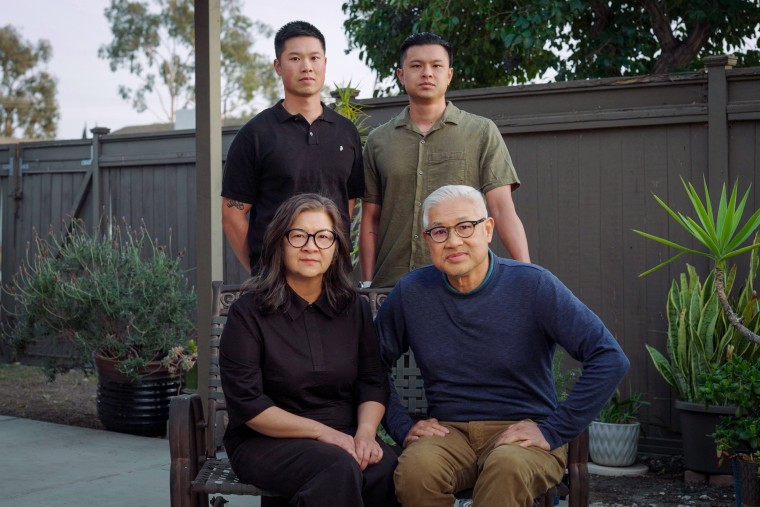Peter Nguyen’s first English sentence at 9 years old was “Give me candy,” after his grandfather carried him away from the naval base their family had been staying at. They were fleeing Northern Vietnamese forces, and Nguyen was face to face with a fleet of battleships and American sailors tossing handfuls of sweets off the boats to Vietnamese children and their families lined up below.
He shared his story with NBC News as part of the 50th anniversary of the fall of Saigon, which effectively ended the Vietnam War 50 years ago on April 30. North Vietnamese forces had captured Saigon, the capital of South Vietnam, and reunited the country as the Socialist Republic of Vietnam.
It spurred a refugee crisis with people fleeing by water, described as “boat people,” who faced attacks by pirates, starvation and drowning.
“It was pandemonium,” Nguyen said. “Everybody just grabbed and just ran to the ships.”
More than 100,000 refugees from Saigon arrived in the United States through Guam. Today, Saigon is called Ho Chi Minh City, named for the first president of North Vietnam, and April 30 is observed in the country as Reunification Day.
Vietnamese American families described their experiences fleeing Saigon and their new lives in the United States. Nguyen, who was interviewed by his daughter, Porschia, said he had to leave because his father was a lieutenant colonel in the South Vietnamese army, and he feared they might be persecuted when Northern forces captured the city.
Nguyen boarded one of the Vietnamese battleships and docked in Subic Bay, Philippines, a few days later. From there, a commercial freight ship took him to Guam, where he stayed at a makeshift refugee camp. Nguyen, who was 9 when he left Saigon and now lives in the United States, keeps a photo of ship number 502 — the now-decommissioned ship that aided his escape from Vietnam in 1975 during the fall of Saigon.
Dzung Pham, who was 14 when he fled Vietnam, said his family had to leave because his father worked for the U.S. government and his mother worked for an American company. His uncle, a retired colonel in the military, never made it out.

“He was enduring all the mortar fires, and the kid was sick, my cousin. And he’s taking her out, you know, to get to some medicine, to see a doctor, and that he will come back in,” Pham said. “He got stuck up there. And ... he was left behind after the fall of Saigon and he was imprisoned and sent to a labor camp. They called it re-education camp for 10 years.”
Hundreds of thousands of people who had worked for Southern Vietnamese or American forces were imprisoned in re-education camps, in which torture and forced labor were commonplace.
Lehoa Wilson was eight months pregnant when a colonel in the U.S. Embassy knocked on her door and told her that she, her husband and their children needed to evacuate Saigon immediately. She had married her husband on one condition: They would live in Vietnam together — nowhere else. Wilson said her tear-stricken goodbyes and headed to the airport.
Her son, Michael, who fled Vietnam at 13 with the family, has lived most of his life in the United States.
“1975 happened just like a flash or, you know — that short adventure was fun,” he said. “But now you have to start out new and a new country, a new language, new friends, people don’t look much like you.” Now, though, he said, the United States is his “home.”
“To me, when I go back to Vietnam to visit — it’s just a destination to visit,” Michael said. “So I’m not really missing living there, but I still enjoy the people and the scenery and the food and the culture there.”